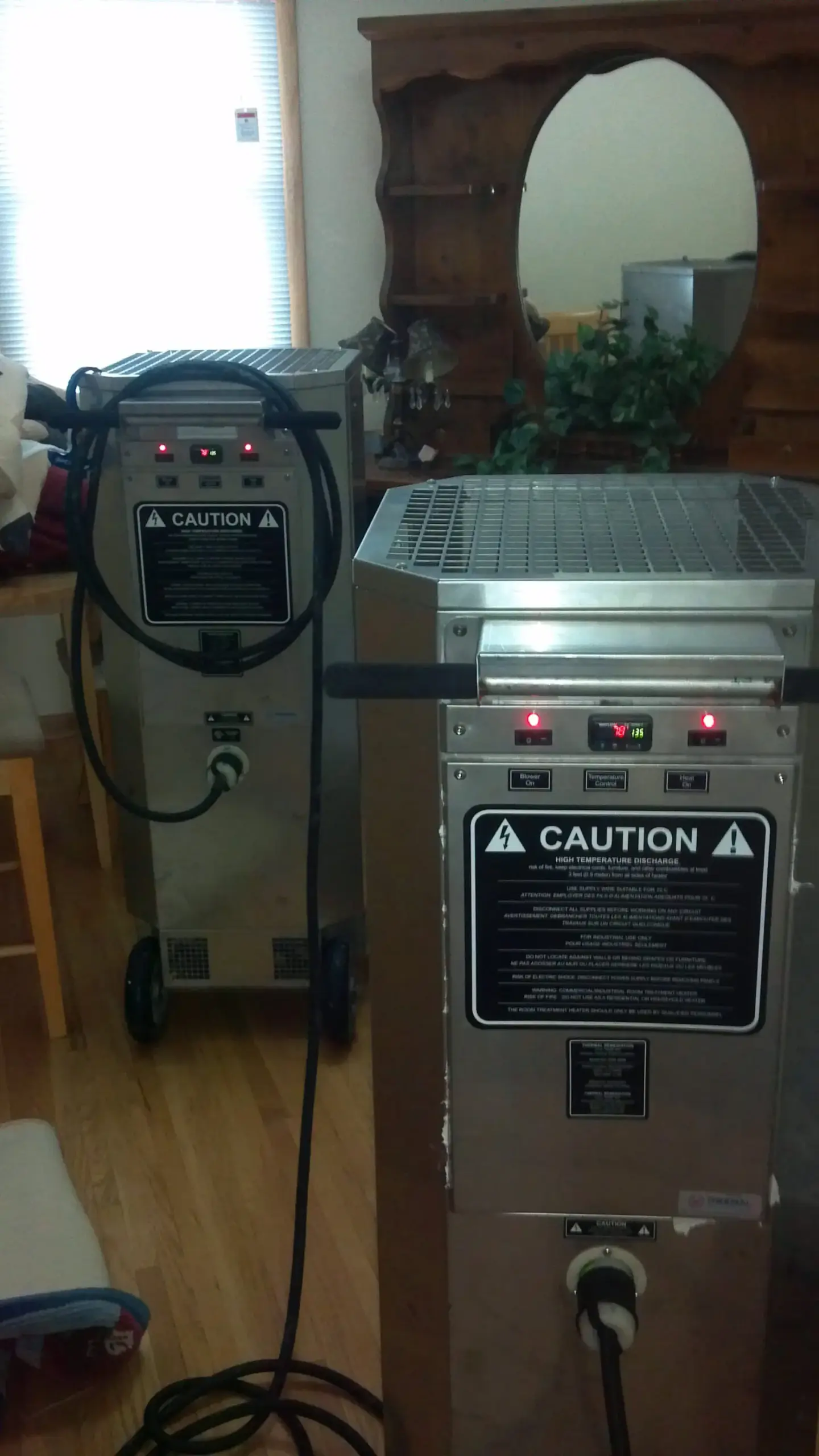What Happens After a Bed Bug Treatment?
What to expect after a bed bug treatment will vary with the type of treatment performed. The most common types of treatments include:
- Biological Control – killing bed bugs via another living organism
- Chemical – sprays and dusts that kill bed bugs
- Freezing – exposing bed bugs to lethal freezing temperatures
- Fumigation – filling a space with fumes lethal to bed bugs
- Heat – heating a structure to the lethal point for bed bugs

In this post we will cover what happens after a biological control bed bug treatment.
Days before a bed bug treatment

Before a treatment is scheduled, an inspection should be performed by a bed bug specialist to determine the extent of the infestation, the source, and verify the species. Different protocols will be needed for bat bugs, swallow bugs, and other closely related bugs.

Day Of Bed Bug Service
When the relieving day of service arrives, a follow up inspection will occur with the technician removing live bed bugs as able with a filtered vacuum.
Remove bedding to be laundered and dried on high heat for at least 40 minutes. Mattresses (and other applicable furniture) should be appropriately treated or covered with a bed bug proof mattress. Since bed bugs can live for a year without feeding, the cover should be left on for 12 months after a bed bug treatment.
A Rove technician applies biological barriers around bed frames, box springs, furniture, picture frames, structural seams, and baseboards. The technician will also identify any other travel or harborage points o address.

The 1st day after bed bug service
Bed bugs will be emerging from their hiding places and interacting with the spores that were applied. These spores will stick to the bed bugs and begin to spread throughout their nesting and harborage sites.
Once spores contact the bed bugs, they will germinate within 24 hours. These spores penetrate the bed bugs’ exoskeletons and grow inside of its body.

The 1st week after a bed bug service
After the spores have penetrated the cuticle (exoskeleton) of the bed bug, the bed bug will die within 3 days to a week. Since not all of the bed bugs are going to come out to feed during the first day, some bed bugs will take more exposure time than others. Some will pick up spores without ever coming out to feed.
Bed bugs will typically leave their harborage just before dying in search of a blood meal. This spike in activity is part of the process and shows the product is working.

Week 2 after a bed bug service
Adult and nymph stage bed bugs will have died via contact with the spores spreading through hiding places or from contacting treated surfaces when they come out to feed.
1 Month after a bed bug service
In the worst case scenario, a female would have been impregnated and had her blood meal the day before the service. This would provide a 10 day window to lay eggs. Tack on the 10 day window a 14 day incubation time followed by nymphs (called instars) that will need to go out to feed on their first blood meal. Sine it takes 3-7 days for the biological agent to kill these bed bugs, the longest feasible window for survival is 31 days.
The technician will return for an inspection to ensure complete control. In some cases, it will make sense to reinforce certain barriers or apply treatment to a new area to ensure complete control.

The most important thing that happens after a bed bug treatment
After Rove Pest Control has completed a biological control treatment, the most important that happens is you get your peace of mind and restful sleep back. A good night’s sleep is one of the most important drivers for health, energy, muscle growth, productivity during the day, and improved social relationships. Don’t let bed bugs rob you of another night’s sleep. Connect with one of Rove’s bed bug experts today!
About Rob Greer: Pest Control Expert and Industry Leader
Rob Greer, co-founder of Rove Pest Control, has a deep connection with nature, developed during his upbringing in rural Idaho where he raised horses and cattle. He began his career in pest control in 2001 to support his university studies. After earning a BS in Business Management, Rob, along with Lenny Gray and McKay Bodily, founded Rove Pest Control.
Rob has played a pivotal role in shaping the operational framework of Rove Pest Control, with a focus on personal development for team members, public health awareness, and tailoring services to meet the needs of individuals and communities.
As an Associate Certified Entomologist (ACE) and Subject Matter Expert (SME), Rob has made significant contributions to the pest control industry. He has collaborated on the Minnesota Department of Agriculture’s UMN Extension certification manual and exam development, the National Pesticide Applicator Certification Core Manual for the EPA, and the Quality Pro Customer Service Credential Task Force. His expertise has also been recognized in his testimony for the pest control industry before the Minnesota state legislature as a State Policy Affairs Representative. Currently, Rob serves as the President of the Minnesota Pest Management Association Board. Learn more about Rob Greer.
